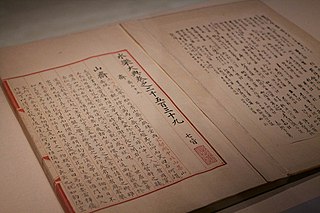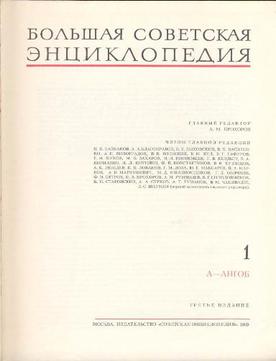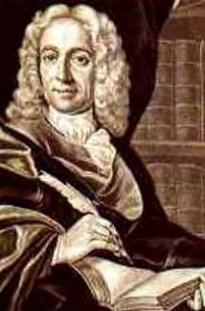
An encyclopedia or encyclopaedia is a reference work or compendium providing summaries of knowledge, either general or special, in a particular field or discipline. Encyclopedias are divided into articles or entries that are arranged alphabetically by article name or by thematic categories, or else are hyperlinked and searchable. Encyclopedia entries are longer and more detailed than those in most dictionaries. Generally speaking, encyclopedia articles focus on factual information concerning the subject named in the article's title; this is unlike dictionary entries, which focus on linguistic information about words, such as their etymology, meaning, pronunciation, use, and grammatical forms.

The Encyclopædia Britannica Eleventh Edition (1910–1911) is a 29-volume reference work, an edition of the real Encyclopædia Britannica. It was developed during the encyclopaedia's transition from a British to an American publication. Some of its articles were written by the best-known scholars of the time. This edition of the encyclopaedia, containing 40,000 entries, has entered the public domain and is readily available on the Internet. Its use in modern scholarship and as a reliable source has been deemed problematic due to the outdated nature of some of its content. Modern scholars have deemed some articles as cultural artifacts of the 19th and early 20th centuries. Additionally, the 11th edition has retained considerable value as a time capsule of scientific and historical information, as well as scholarly attitudes of the era immediately preceding World War I.

The Yongle Encyclopedia or Yongle Dadian Chinese leishu encyclopedia commissioned by the Yongle Emperor of the Ming dynasty in 1403 and completed by 1408. It comprised 22,937 manuscript rolls in 11,095 volumes. Fewer than 400 volumes survive today, comprising about 800 rolls, or 3.5% of the original work.

The Great Soviet Encyclopedia is the largest Soviet Russian-language encyclopedia, published in the Soviet Union from 1926 to 1990. After 2002, the encyclopedia's data was partially included into the later Boljšaja rossijskaja enciklopjedija in an updated and revised form. The GSE claimed to be "the first Marxist–Leninist general-purpose encyclopedia".

Cyclopædia: or, An Universal Dictionary of Arts and Sciences is a British encyclopedia prepared by Ephraim Chambers and first published in 1728; six more editions appeared between 1728 and 1751 with a Supplement in 1753. The Cyclopædia was one of the first general encyclopedias to be produced in English.

Encyclopædia Iranica is a project whose goal is to create a comprehensive and authoritative English-language encyclopedia about the history, culture, and civilization of Iranian peoples from prehistory to modern times.

The Institute of the Italian Encyclopedia Treccani, also known as the Treccani Institute, is a cultural institution of national interest, active in the publishing field, founded by Giovanni Treccani in 1925.

The Encyclopaedia of Islam (EI) is a reference work that facilitates the academic study of Islam. It is published by Brill and provides information on various aspects of Islam and the Islamic world. It is considered to be the standard reference work in the field of Islamic studies. The first edition was published in 1913–1938, the second in 1954–2005, and the third was begun in 2007.

Matthias Bel or Matthias Bél was a Lutheran pastor and polymath from the Kingdom of Hungary. Bel was active in the fields of pedagogy, philosophy, philology, history, and theoretical theology; he was the founder of Hungarian geographic science and a pioneer of descriptive ethnography and economy. A leading figure in pietism. He is also known as the Great Ornament of Hungary.

St. Thomas' College (Autonomous), Thrissur, is a government aided college located in Thrissur, Kerala, India. It is founded by Mar Adolph Medlycott in 1889. It is the oldest college in the Erstwhile Princely State of Cochin and present day Thrissur district. It is the second private college to be recognised as a first-grade college under the University of Madras. It is the first Catholic college in Kerala and is conducted by the Syro-Malabar Catholic Archdiocese of Thrissur.
The college is affiliated with the University of Calicut. The college attained Autonomous status in 2014 and was recognised as College with Potential for Excellence by University Grants Commission in 2016. The college was accredited with A++ grade in its fourth cycle of National Assessment and Accreditation Council (NAAC) accreditation, scoring CGPA of 3.70 on a four-point scale in October 2022.
Tatar Encyclopaedic Dictionary is the first encyclopaedic dictionary published in Tatar language about history of Tatarstan and the Tatar people. The publication is produced by Tatar Encyclopedia Institute of the Republic of Tatarstan Academy of Sciences.

The Encyclopedia of Yugoslavia or Yugoslavika was the national encyclopedia of the Socialist Federal Republic of Yugoslavia. Published under the auspices of the Yugoslav Lexicographical Institute in Zagreb and overseen by Miroslav Krleža, it is a prominent source and comprehensive reference work about Yugoslavia and related topics.

Encyclopedia of Modern Ukraine, abbreviated EMU, is a multi-volume national encyclopedia of Ukraine. It is an academic project of the Institute of Encyclopaedic Research of the National Academy of Sciences of Ukraine. Today, the reference work is available in a print edition and online.
The Byelorussian Soviet Encyclopedia is the first universal encyclopaedia in the Belarusian language in 12 volumes printed in Minsk from 1969 to 1975. The chief editorial board was established in 1967.
The State Institute of Encyclopaedic Publications (SIEP) is a cultural institution founded in 1961 under the Department of Cultural Affairs, Government of Kerala, India with the objective of disseminating knowledge to the people of Kerala in their pursuit of learning. It was constituted as part of the government policy that Malayalam should be used as the medium of education, administration and judiciary.

The House of Forgách was a Hungarian noble family in Hungary which became very influential during the Ottoman wars in Europe in Royal Hungary. The family held the title of Count in Hungary, granted to them on 11 May 1675.
Abwehrgruppe 218, known under the codename "Edelweiss", was a German rear-security unit operating in Slovakia during World War II. Unit was constituted during September 1944 and led by SS-Sturmbannführer Erwein von Thun-Hohenstein. In the period from September 1944 to April 1945 the unit carried out more than 50 missions, which resulted in killing around 300 people, including civilians; another 600 were taken prisoner. One of the most famous actions of the unit was the capture of members of an American OSS mission under command of Lieutenant James Holt Greene and a British SOE mission under Major John Sehmer on 26 December 1944 in the Nízke Tatry Mountains. The unit is known for a number of war crimes, especially the massacre of civilians in the villages of Ostrý Grúň and Kľak, among the most notorious war crimes committed on Slovak territory during the war.
Štefan Luby is a Slovak physicist and senior research fellow at the Slovak Academy of Sciences (SAS). He is doctor honoris causa of University of Salento, Italy, Slovak University of Technology in Bratislava, University of Constantine the Philosopher in Nitra, Slovakia, and Alexander Dubček University in Trenčín, Slovakia. He occupied positions of the director of the Institute of Physics of SAS for nine years and was the president of the SAS for fourteen years (1995–2009). He was the acting president of the All European Academies and the acting president of the Central European Academy of Sciences and Arts. At present, he is a member of Senate and vice-president of the European Academy of Sciences and Arts with the headquarters in Salzburg. He has chaired the editorial board of the Slovak Encyclopaedia Beliana since 1992.













